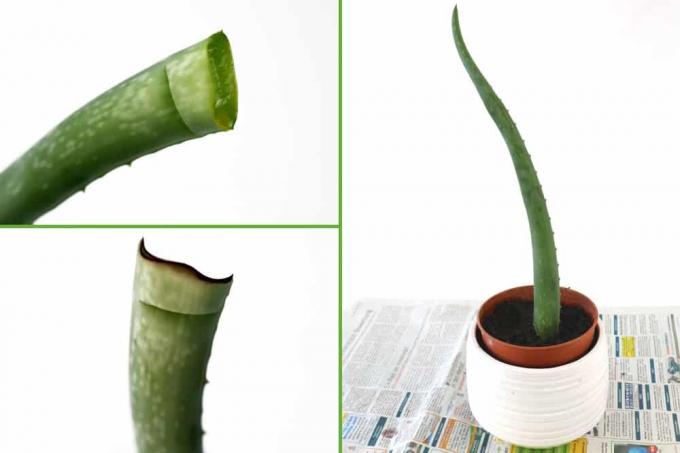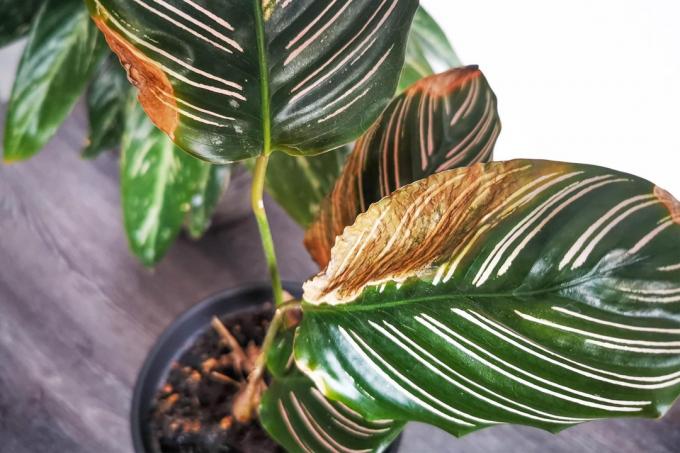

Table of contents
- sowing
- Propagation by Kindel
- Propagate with cuttings
- care for young plants
Aloe vera belongs to the lily family and is best known for its positive properties as a medicinal plant. The succulent plant can be propagated using three different methods, although the chances of success can vary greatly. In addition, the amount of work and the time it takes for a well-rooted young plant to grow differ. The offspring of the mother plant are perfect for quick and easy propagation.
sowing
Rearing with the help of seeds takes much longer than propagating with offshoots. However, if you want to breed a very specific and rare variety of aloe vera, this method is well suited for you. In principle, sowing is possible all year round, but there are certain seasons and climatic conditions in which propagation by seeds works better. Mild temperatures are ideal for the germination process; direct sunlight and heat should be avoided. In order to promote germination, the cultivation vessels can be converted into small greenhouses. Simply put a transparent foil over the pot. However, the vessel must be aired daily, otherwise mold can form. As soon as the young plants grow vigorously and the seedlings are about two fingers high, they are pricked out and placed individually in different pots.
- Seeds are available from specialty retailers and garden centers
- Mail order is ideal for extremely rare specimens
- Own harvest is also possible
- Sowing in spring is ideal because of better light conditions
- Aloe vera seeds germinate in the sun
- Need a very bright and warm place to germinate
- Cultivation soil is ideally suited as a substrate
- Alternatively, a mixture of sand and earth is also possible
- Scatter seeds loosely over the substrate
- Keep sowing moderately moist, must not dry out
- It is essential to prevent waterlogging
- After a few weeks, seedlings will appear
Propagation by Kindel
The easiest and most popular method of propagating aloe vera are the offshoots, which are also referred to as Kindel. These sprouts sprout on the side of the trunk, but only when the mother plant is about three years old. With very young plants, this method of propagation is therefore not possible in the early years. Before separating the branches, make sure that they have already formed their own roots. This greatly simplifies reproduction. In order to get an accurate picture of the growth progress of the offshoots, the entire mother plant is removed from the pot and then the matching child is removed. Aloe vera is a very frugal plant and should not be watered too much. Only enough irrigation water should be given so that the substrate does not dry out completely.
- Carefully separate the children from the mother plant
- Offshoots should be at least 5 cm long
- Only use sharp and disinfected cutting tools
- Avoid damaging other parts of the plant
- Allow interfaces to air dry for a few days
- Transplant seedlings into their own containers
- Use in slightly moist succulent substrate
- Place in a warm and bright location
- However, avoid direct sunlight
Tip:
You should wait about a week after transplanting with the first watering units. The young aloe vera is then watered and cared for as usual.
Propagate with cuttings

If the plant is not old enough or takes a very long time to develop children, the aloe vera can also be propagated by cuttings from the well-developed leaves. In general, the propagation of cuttings can be carried out at any time of the year, but the success depends to a large extent on the temperature values. It should be noted that the leaves of aloe vera are very susceptible to rot due to their extremely water-rich tissue. In order not to injure the mother plant unnecessarily, only sharp and clean knives may be used for cutting. Otherwise there will be bruises, which will then begin to rot. The pot for the cutting should not be too big. The young aloe vera is only put into its final pot when the cultivation vessel is well rooted.
- Ideally carry out in the growing season in spring
- Cut off sufficiently large leaves that are growing on the outside
- Then divide the leaf into several pieces of the same size
- Allow cut surfaces to dry for a few days
- Then plant cuttings in sandy and slightly moist soil
- Insert about 1-2 cm deep into the substrate and press lightly
- Leaf piece should stand upright
- Wait with the first watering unit until roots form
- Then keep the substrate evenly moist, but not too wet
- A light and warm location is ideal for the cuttings
- Protect from too much sun
A notice:
Only the upper half of a leaf can be used as a cutting, but longer specimens must then be attached to supporting sticks so that they do not fall over.
care for young plants
Aloe vera is a desert plant and can survive without water for some time. Drought is tolerated better than too many watering units, as the plant is very good at accumulating liquid. However, the small young plants can only store little water at the beginning and would suffer unnecessarily from waterlogging. In addition, aloe vera tends to fungus and rot. In addition, the young cuttings do not tolerate much sunlight at the beginning until they have fully developed their root system. As the cuttings begin to take root, they will dry out and begin to shrink slightly. If the same size is maintained and the consistency becomes softer, the leaf pieces will rot. Choosing the right soil is extremely important for cultivation, as this prevents signs of rot. Loamy and humus-rich soil is not suitable for the succulents, they need a lean substrate.
- In the beginning, a rather dark location is ideal
- Only move to a bright and sunny place after root formation
- Do not water young plants from above, only from the side
- In general, sparing watering is advisable
- Waterlogging can cause major damage
- On the other hand, temporary drought is well tolerated
- Sandy cactus soil is ideal for growing
- Rotting cuttings do not take root, must be removed
- Root formation can be stimulated by root hormone
- Alternatively, administer honey, willow water or cinnamon
 Home editorial office
Home editorial office
Learn more about houseplants

16 cat-friendly houseplants
If you share an apartment with a cat, you should not have any poisonous indoor plants, because cats occasionally eat the greenery. There are many cat-friendly houseplants that are harmless and can recover quickly once a cat has bitten them.

Calathea gets brown leaves: how to save?
The foliage of a calathea, also known as a basket marante, has its price. And that doesn't mean the purchase price. The tropical plant wants to be cared for and feels like it is in its native rainforest. She expresses her dissatisfaction with unfavorable living conditions with brown leaves.

Monstera droops leaves: what to do?
Its serrated leaves make the Monstera one of the most popular indoor plants. But what can be the reason for it letting the leaves droop, and what can you do about it?

Water houseplants properly 15 tips for potted plants
Watering indoor plants properly sometimes turns out to be more difficult than expected. There are certain points you need to keep in mind when watering your indoor plants so they can show off their full glory. 15 tips on the subject can be found in this guide.

Efeutute, Epipremnum aureum: care from A - Z
The ivy or Epipremnum aureum is one of the most popular houseplants par excellence and is also ideal for people without a green thumb. You can find out how to care for the plant from A - Z here.

Christmas Cactus Losing Buds: 6 Reasons & Solutions
The Christmas cactus is a real feast for the eyes in the living room from late summer with its beautiful flowers. Unfortunately, it often happens that the houseplant loses its buds. Find out here what causes the buds to fall and how you can counteract them.
